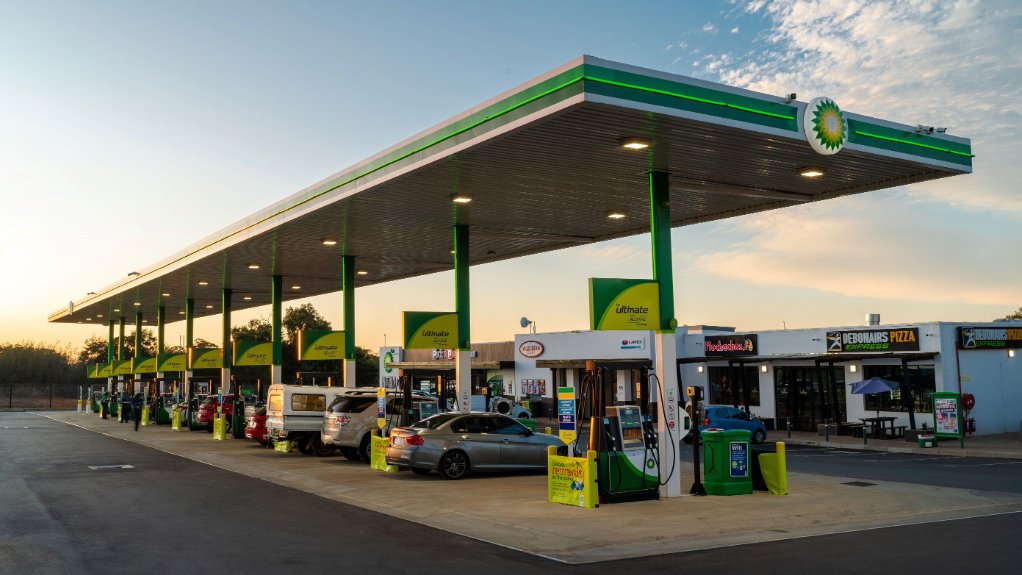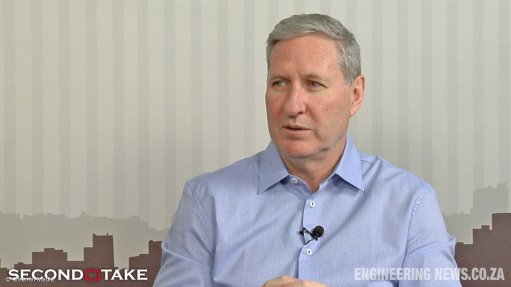Clean energy trajectory increasingly influenced by geopolitical fragmentation – bp
Global energy company bp has added to its latest ‘Energy Outlook’ publication a section on important current issues influencing the global energy system, such as geopolitical fragmentation and the greater focus on energy security while decarbonisation remains imperative.
The company has noted changes in some countries’ energy and decarbonisation policies and signs of the global economy becoming more fragmented, which are shifts that will have implications on the energy produced and consumed across the world, says bp chief economist Spencer Dale.
The energy sector has also seen rapid developments in AI – in the technology itself, in its demand for energy and in the expectations of its use in the coming years.
“The world is consuming more of all kinds of energy. We have seen continued growth in investment in the low-carbon energy system, especially in increasing levels of electrification and in wind and solar power generation. Simultaneously, global demand for fossil fuels has been resilient too,” Dale points out.
He adds that global energy demand growth is driven by emerging economies, underpinned by rising prosperity and living standards. Electricity demand is poised to double by 2050 compared with today.
At the current trajectory, carbon emissions will only be 25% lower by 2050 compared with today; however, should the world achieve a faster reduction in emissions in a below 2 ˚C global warming scenario, carbon emissions could decrease by 90% by 2050, driven by a tightening in climate policies, adoption in low-carbon energy and consumer trends.
The energy system will likely not follow either scenario exactly, Dale warns, as no one can predict the real trajectory of emission reduction and energy development. However, the scenarios outlined in bp’s report can help inform strategies to speed up the clean energy transition.
bp energy transition and system analysis head Gareth Ramsay says in the current trajectory scenario oil demand will continue rising over the next decade and only starts to fall by 2035 to about 80-million barrels a day by 2050.
In an accelerated energy transition scenario, oil demand could trail off drastically to 40-million barrels a day by 2050.
The single-biggest driver of oil demand growth has been road transportation historically; however, vehicles are becoming more efficient and switching to electric powertrains, which leaves oil to be used more as a petrochemical feedstock in processes. Ramsay points out that how feedstock demand unfolds will have the biggest impact on oil demand in future.
In turn, Ramsay says data centres are becoming a significant driver of electricity demand globally, leading to increasing electrification globally in either scenario. What will differ, however, is the source of electricity.
bp says wind and solar generated 15% of electricity globally in 2024, but will likely account for 50% of electricity generation by 2050.
The current trajectory is that low-carbon energy use is rising, but unabated fossil fuels are growing too. In the below 2 ˚C scenario, there is more substitution rather than addition, where low-carbon energy use grows fast enough for unabated fossil fuel use to decline.
In respect of issues that are much more sensitive in its influence on the global energy system evolution, Ramsay says the current trajectory will see natural gas demand rise at least until the 2040s, to 20% higher than its current level; however, in the below 2 ˚C scenario, natural gas demand starts to decline down to half of its current demand by 2050.
Ramsay states that low-carbon hydrogen demand will increase to a limited 70-million tonnes a year in the current trajectory, but could grow to a markable 350-million tonnes a year by 2050 in an accelerated below 2 ˚C scenario, should more countries and companies decide to invest to abate heavy industrial sectors.
GEOPOLITICAL FRAGMENTATION
Dale says geopolitical tension, which came to the fore with Russia’s war in Ukraine, has resulted in the increasing use of sanctions and tariffs, which have refocused attention on the importance of energy security.
For some countries, it means reducing dependency on imported fossil fuels and accelerating the transition to greater electrification, powered by domestic low-carbon energy.
The impact of increased geopolitical fragmentation on the growth of international trade and GDP lowers energy demand, while heightened energy security concerns have different, and in some cases offsetting, impacts on the fuel mix.
An increased preference for domestic energy relative to imported energy will lead to a shift away from oil and natural gas, which are the most heavily traded fuels, towards renewables and coal.
Dale says the implications of increased geopolitical fragmentation will ultimately differ across countries depending on the structure of their energy systems. The US, for example, will be less exposed to the impact of weaker net trade in the energy sector given its less trade-intensive economy.
In China, as a net energy importer but also a global leader in producing low-cost green technology, it is less impacted by a higher levelised cost of energy from a greater focus on domestic supply chains for these technologies. China is, however, highly exposed to international trade and so is more affected by the impact of weaker net trade on economic growth.
Moreover, both the EU and India are net energy importers and rely on international supply chains for low-carbon technologies. As such, they are exposed to all the various channels stemming from increased energy security concerns. The net impact in the EU and India will be a reduction in overall energy demand.
Dale concludes that if the move to a faster decarbonisation pathway is delayed beyond the early 2030s, it will be increasingly difficult to meet a 2 ˚C carbon budget without incurring a costly and disorderly transition.
Article Enquiry
Email Article
Save Article
Feedback
To advertise email advertising@creamermedia.co.za or click here
Comments
Press Office
Announcements
What's On
Subscribe to improve your user experience...
Option 1 (equivalent of R125 a month):
Receive a weekly copy of Creamer Media's Engineering News & Mining Weekly magazine
(print copy for those in South Africa and e-magazine for those outside of South Africa)
Receive daily email newsletters
Access to full search results
Access archive of magazine back copies
Access to Projects in Progress
Access to ONE Research Report of your choice in PDF format
Option 2 (equivalent of R375 a month):
All benefits from Option 1
PLUS
Access to Creamer Media's Research Channel Africa for ALL Research Reports, in PDF format, on various industrial and mining sectors
including Electricity; Water; Energy Transition; Hydrogen; Roads, Rail and Ports; Coal; Gold; Platinum; Battery Metals; etc.
Already a subscriber?
Forgotten your password?
Receive weekly copy of Creamer Media's Engineering News & Mining Weekly magazine (print copy for those in South Africa and e-magazine for those outside of South Africa)
➕
Recieve daily email newsletters
➕
Access to full search results
➕
Access archive of magazine back copies
➕
Access to Projects in Progress
➕
Access to ONE Research Report of your choice in PDF format
RESEARCH CHANNEL AFRICA
R4500 (equivalent of R375 a month)
SUBSCRIBEAll benefits from Option 1
➕
Access to Creamer Media's Research Channel Africa for ALL Research Reports on various industrial and mining sectors, in PDF format, including on:
Electricity
➕
Water
➕
Energy Transition
➕
Hydrogen
➕
Roads, Rail and Ports
➕
Coal
➕
Gold
➕
Platinum
➕
Battery Metals
➕
etc.
Receive all benefits from Option 1 or Option 2 delivered to numerous people at your company
➕
Multiple User names and Passwords for simultaneous log-ins
➕
Intranet integration access to all in your organisation

















